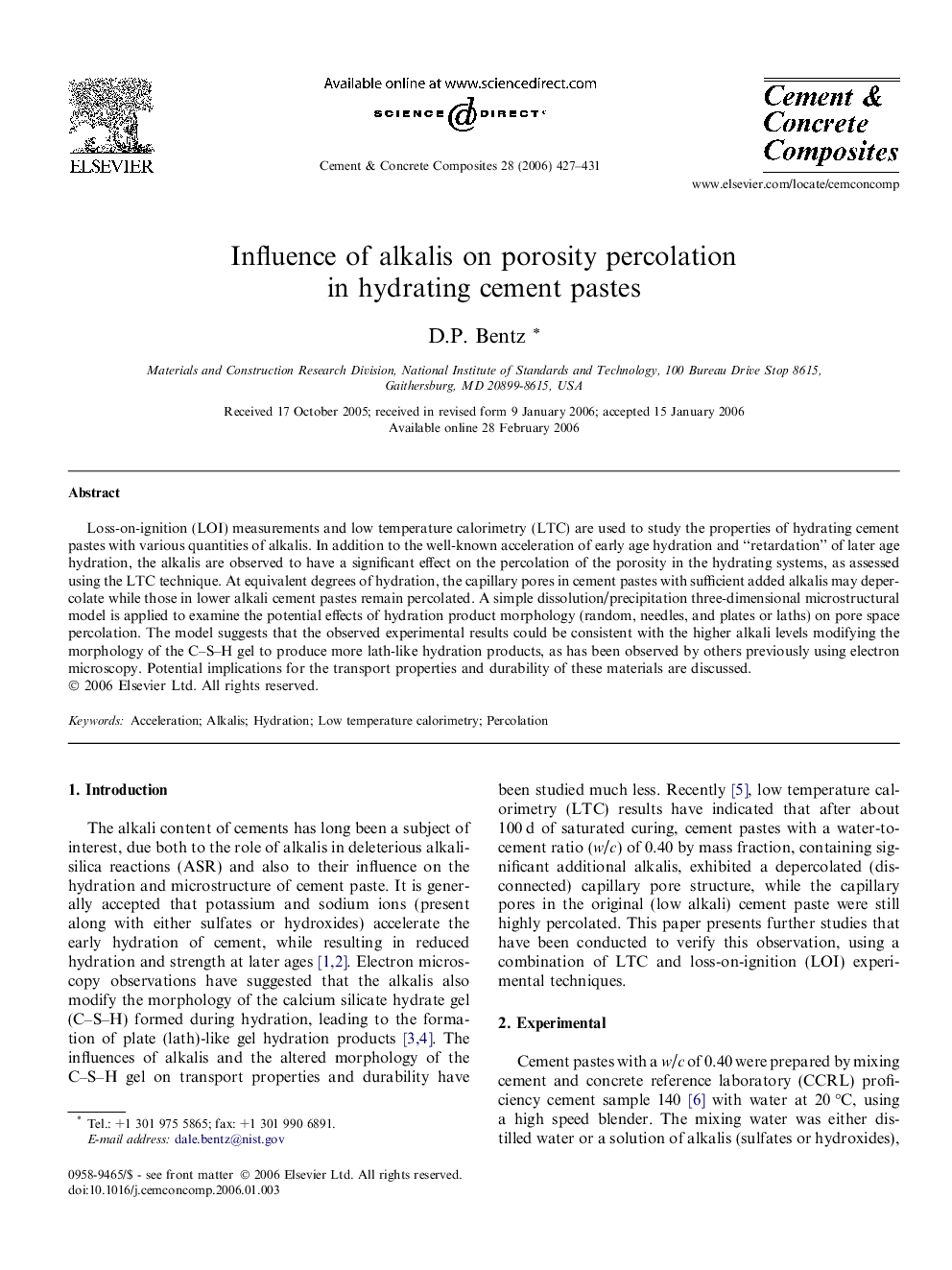| Article ID | Journal | Published Year | Pages | File Type |
|---|---|---|---|---|
| 1455884 | Cement and Concrete Composites | 2006 | 5 Pages |
Loss-on-ignition (LOI) measurements and low temperature calorimetry (LTC) are used to study the properties of hydrating cement pastes with various quantities of alkalis. In addition to the well-known acceleration of early age hydration and “retardation” of later age hydration, the alkalis are observed to have a significant effect on the percolation of the porosity in the hydrating systems, as assessed using the LTC technique. At equivalent degrees of hydration, the capillary pores in cement pastes with sufficient added alkalis may depercolate while those in lower alkali cement pastes remain percolated. A simple dissolution/precipitation three-dimensional microstructural model is applied to examine the potential effects of hydration product morphology (random, needles, and plates or laths) on pore space percolation. The model suggests that the observed experimental results could be consistent with the higher alkali levels modifying the morphology of the C–S–H gel to produce more lath-like hydration products, as has been observed by others previously using electron microscopy. Potential implications for the transport properties and durability of these materials are discussed.
